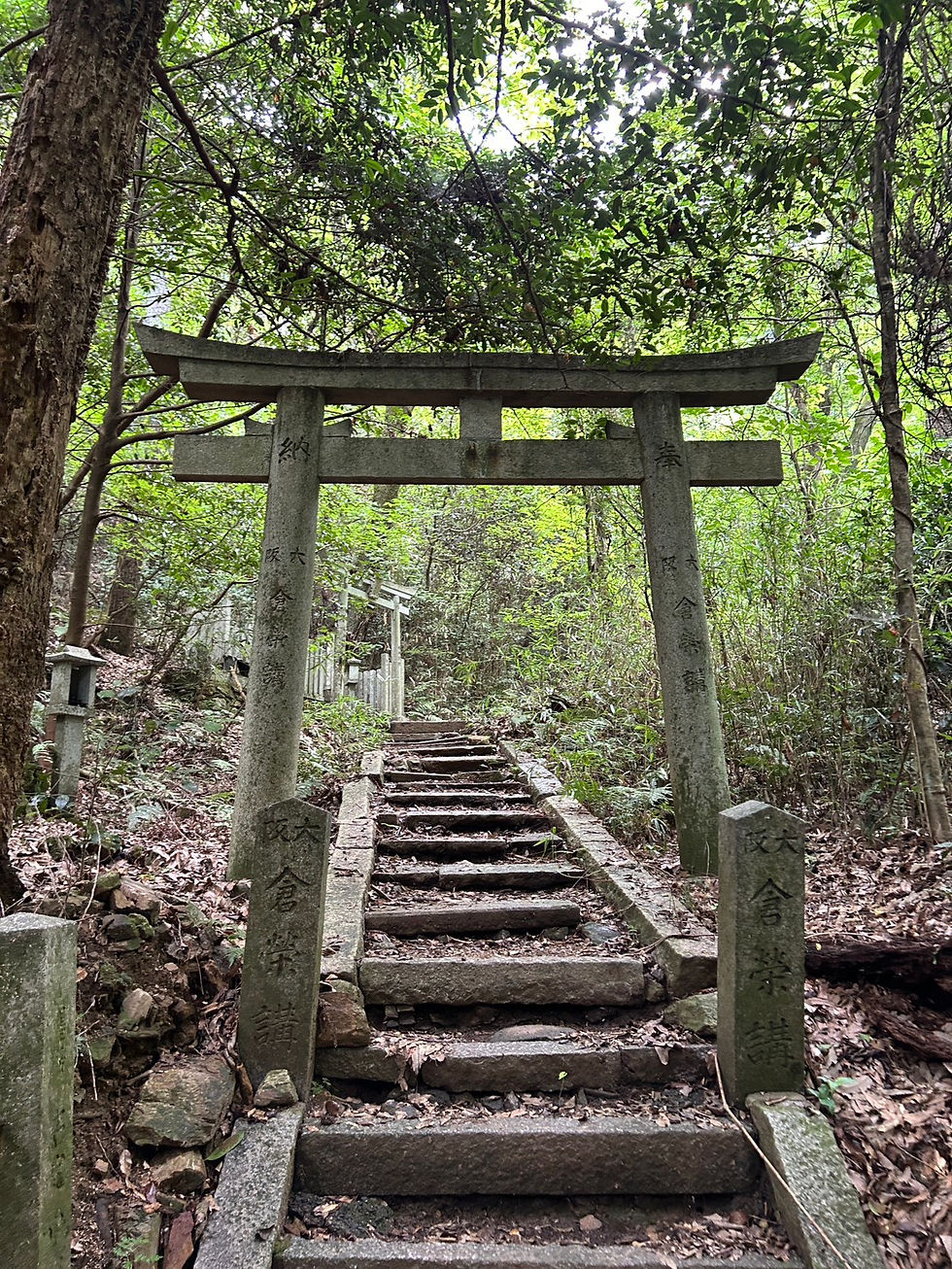Hatsumode at Himukai Daijingu, Kyoto - New Year Rituals at a Kyoto 'Power Spot'.
- Phillip Jackson

- Jan 7, 2024
- 3 min read
Hatsumōde (初詣, hatsumōde) is the first visit of the year to a temple or shrine, a task usually taken by people within the first few days of the new year to wish for health, luck, and prosperity over the coming 12 months. Visitors to the shrines will often purchase an omamori (charm/amulet), whilst returning the old ones from the previous year (now that they have done their good work!). As HIDDEN PATHS is all about visiting locations less crowded or less frequent, 'hidden', our hatsumode visit took us to Himukai Daijingu, a shrine that is featured in one of the walking routes in HIDDEN PATHS - Walking Historical Kyoto Volume 5. Pictured below, the stairway up to the main entrance of Himukai Daijingu.
Himukai Daijingu, Kyoto’s Ise, the ‘Sun-facing’ shrine as it looks south, was founded during the 5th century in the reign of Emperor Kenzou when according to legend, the soul of the Shinto Sun Goddess, Amaterasu, leapt to this location from Mt Takachiho. Mount Takachiho is the legendary site in Japanese religious mythology where Amaterasu, angered by the misdeeds of her younger brother, Susanoo, shut herself away into a cave, Ama no Iwato, plunging the Earth and Heavens into darkness.
Pictured below, the main precinct of the shrine grounds.

The inner shrine of Himukai Daijingu enshrines the Sun Goddess Amaterasu, as well as the Munakata sanjojin (three Munakata goddesses). These kami (gods) are believed to be daughters of Amaterasu (and also from some sources the daughters of Susanoo (the younger brother of Amaterasu)), and are deities of seafaring and road travelling safety.
The outer shrine enshrines Ninigi no Mikoto and Ame-no-Minakanushi. Ninigi no Mikoto is deified and worshipped for good fortune in farming. Whereas Ame-no-Minakanushi is detalied in Japanese myth as ‘the first god to appear in the heavenly realm of Takamagahara (High Plain of Heaven, Abode of The Heavenly Gods).

The shrine, due to conflicts, including the Onin War of 1467 to 1477, and other such activities was lost due to fire and over the centuries has gone through rebuilds. The shrine was eventually reconstructed properly in the late 1500’s to early 1600’s by the Shogun Tokugawa Ieyasu after Noro Munemitsu of Ise Shrine received a vision from the Gods in one of his dreams instructing it.
Pictured below, the route from the shrine areas up to the Ama no Iwato cave.

Although the Ama no Iwato cave at Himukai Daijingu does not have the same importance as the Ama no Iwato in Miyazaki (the original), and it was no doubt carved out of the rock here due to the legend that Amaterasu’s soul leapt from Takachiho to Himukai Daijingu, many people name it as a strong ‘power spot’ in Kyoto. In fact, the location featured on TV recently as a 'power spot' in Kyoto. Passing through the cave is said to offer good luck and the warding off of evil spirits.
Pictured below, the entrance to Ama no Iwato cave.

Himukai Daijingu is an old location surrounding by nature and is beside the Kyoto Trail, yet, fortunately, it rarely receives crowds of visitors and is an ideal place to do the ritual of hatsumode (or visit at any time during the year).
Pictured below, the route connecting to the Kyoto Trail hiking route that runs by Himukai Daijingu.

Access - The nearest train station is the subway Keage Station.
LINKS
Himukai Daijingu is a featured walking route in 'HIDDEN PATHS - Walking Historical Kyoto Volume 5', available in digital and paperback formats from all regions of AMAZON.
The Real Japan - You can find an excellent walk-thru by Rob Dyer (The Real Japan) video of Himukai Daijingu on The Real Japan YouTube channel https://www.youtube.com/watch?v=risuTuk1gnc





Comments